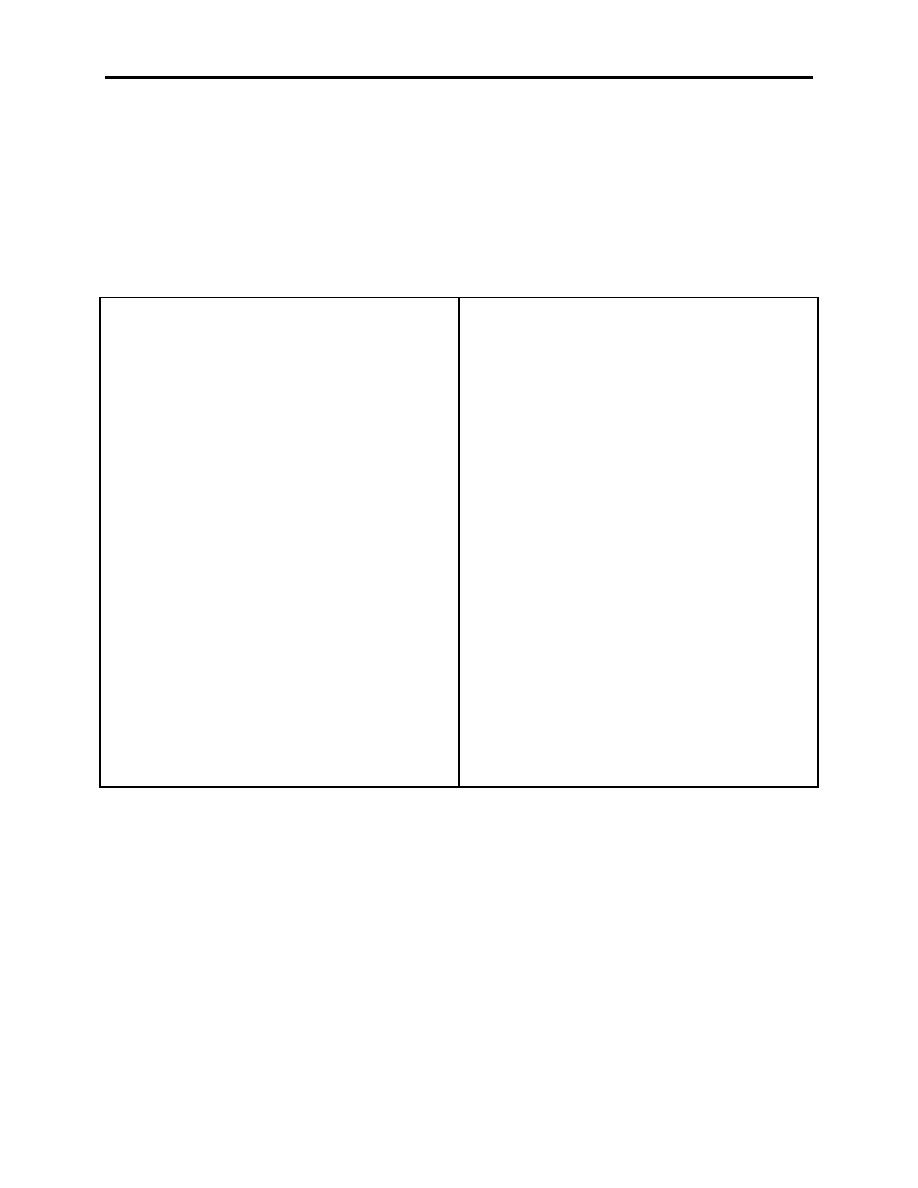 |
|||
|
|
|||
| ||||||||||
|
|  LOW-LEVEL AND TACTICAL FORMATION
CHAPTER ONE
2.
VR Routes. AP/1B's guidance on VFR Military Training Routes (VR) is much less
restrictive. You should be on an IFR flight plan while going to and from your VR route. Your
flight plan must have the fix (radial and distance) of your entry point. You need your exit fix
(radial and distance) only if you are transitioning to IFR. You must still remain within the
published route and avoid airports by 1500 feet AGL or 3 NM when practical. The weather
requirements for flying a VR route are 3000 feet AGL and 5 miles visibility. Contact flight
service (FSS) on frequency 255.4 when entering the route and squawk 4000. While on the route,
you should monitor flight service.
(3) Aircraft shall be scheduled with a minimum of 10 min longitudinal
IR-166
separation.
(4) The primary method invoking MARSA shall be by schedul-
ORIGINATING/SCHEDULING ACTIVITY:
ing. All proposed users of IR-166 or any other approved IR route
COMTRAWING TWO NAS Kingsville, TX 78363 DSN 861-
that is common with IR-166 or any part thereof, shall coordinate
6283/6108 C512-595-6283/6108.
that route with TRAWING TWO, NAS Kingsville, TX.
(5) MARSA applies after acft have passed the entry point and
HOURS OF OPERATION: 0600-2400 local 7 days a week.
until standard ATC separation is established after exiting the
route.
ROUTE DESCRIPTION:
(6) The lost communication route and altitude for all acft filed to
NAS Kingsville shall be Point J, direct NOI 270/015, maintain
Altitude Data
Pt Fac/Rad/Dist
Lat/Long
7000 ft. Proceed via 15 mile DME arc either north or south as
As assigned to
A NQI 116/24 27'16.0'N 97'26.0'W
appropriate and complete the final portion of the TACAN 13R or
SFC B 30 MSL to
B NQI 134/31 27'05.0'N 97'27.0'W
35R approach to NQI.
SFC B 30 MSL to
C BRO 339/56 26'50.0'N 97'35.0'W
(7) If NAS Kingsville is not the filed destination, all other pro-
SFC B 30 MSL to
D NQI 197/41 26'53.0'N 98'08.0'W
posed users shall exit at Point H, turn left, climb and maintain
SFC B 30 MSL to
E NQI 254/41 27'25.0'N 98'34.0'W
7000 ft MSL and proceed as per the filed flight plan, while
SFC B 30 MSL to
F LRD 079/34 27'30.0'N 98'47.0'W
climbing, attempt to contact Houston ARTCC on 307.2 for fur-
SFC B 30 MSL to
G LRD 050/36 27'47.0'N 98'50.0'W
ther routing. If unable to contact the center, proceed to filed
SFC B 30 MSL to
H LRD 047/51 27'57.0'N 98'37.0'W
destination via route filed in flight plan or coded recovery route.
SFC B 30 MSL to
I NQI 274/32 27'37.0'N 98'23.0'W
CAUTION: Do not enter R-6312 without Yankee Target Control
SFC B 30 MSL to
J NQI 244/16 27'25.0'N 98'06.0'W
approval.
NOTE: 0600 to sunset only - altitudes are SFC B 20 MSL.
(8) All entry and exit points shall be compulsory reporting
points.
TERRAIN FOLLOWING OPERATIONS: Authorized the
(9) ATC freqs: Point A to H, 291.6 or as assigned; Point H to J
entire route.
NQI ATCF or as assigned.
(10) Maintain 1500 feet AGL within 3 NM of Wyatt Ranch Airport
ROUTE WIDTH - 5 NM either side of centerline from A to I;
located at 27'25.2'N 98'36.5'W 2 NM W of Point E.
3 NM either side of centerline from I to J.
(11) Scheduling of, or amendments to shall be coordinated with
the scheduling activity 2 hours prior to use in accordance with
Special Operating Procedures:
Letter of Agreement between COMTRAWING TWO, Houston
ARTCC and NAS Kingsville ATCF
(1) Route will be flown 250-420 knots, low-level navigation.
(2) Alternate Exit: H.
Figure 1-1 IR-66 Description
3.
SR Routes. Slow Speed Low Altitude Training Routes (SR) are flown at or below 1500 feet
AGL at airspeeds of 250 KIAS or less. AP/1B specifically prohibits high speed aircraft from
flying SR routes. Even though all time spent on an SR route is VFR, you must still file a flight
plan. File to a fix most appropriate for the entry point of the route. If transitioning to IFR upon
exiting, file to a fix most appropriate for the exit point of the route. Stay within the published
corridor and squawk 1200 unless otherwise instructed by ATC. Aircraft flying SR routes must
have weather of at least 1500 feet AGL and 3 miles.
To choose a low-level route, consult FLIP AP/1B. Locate your departure field and destination
on the appropriate map and choose some potential routes (IR, VR, or SR). Figure 1-1 is the
LOW-LEVEL NAVIGATION 1-5
|
|
Privacy Statement - Press Release - Copyright Information. - Contact Us |